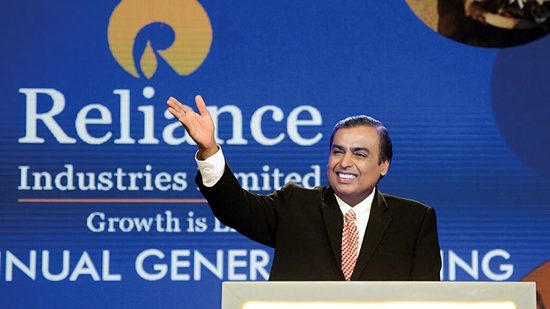The Volatility Index VIX measures the market’s anticipation of volatility in the short term. Volatility is sometimes defined as the “rate and size of price movements” and is commonly referred to as risk in finance.
The Volatility Index is a measure of the amount by which an underlying Index is predicted to change in the near future (measured as annualized volatility, expressed in percentage e.g., 20%) based on the underlying index options order book.
In general, the VIX rises during times of financial stress and falls when investors become complacent. It is the market’s most accurate predictor of short-term market volatility.
Implied volatility is the predicted volatility of the underlying, in this example a wide variety of NFTY 50 Index options. It indicates the degree of price volatility suggested by the options markets, not the index’s actual or historical volatility.
If implied volatility is high, so will the premium on options, and vice versa. Increasing option premiums, in general, imply a rising expectation of future volatility of the underlying stock index, which reflects greater implied volatility levels, assuming all other variables stay constant.
VIX and Stock-Market Behavior
While other elements are at play, in most circumstances, a high VIX indicates increasing market panic, while a low VIX indicates complacency. Historically, this pattern in the link between the VIX and stock market behavior has reproduced itself in bull and bear cycles, which we shall examine in further detail below. During instances of market upheaval, the VIX rises, owing to panic buying of OEX options as a hedge against additional drops in stock portfolios. During bull markets, there is less anxiety and hence less need for portfolio managers to buy puts.
While other factors are at work, in most cases, a high VIX signals growing market fear, whereas a low VIX shows calm. This trend in the relationship between the VIX and stock market behaviour has historically repeated itself in bull and bear cycles, as we will see below. The VIX surges during market upheavals due to panic purchase of OEX options as a hedge against further declines in stock portfolios. During bull markets, there is less concern, therefore portfolio managers have less need to buy puts.
In this case, the VIX may be used in two ways: The first step is to examine the VIX’s current level to determine its stock-market implications. Another technique is to look at ratios that compare the present level to the VIX’s long-term moving average. The second approach, known as detrending, aids in the removal of long-term patterns in the VIX, resulting in a more stable reading in the form of an oscillator.
What is INDIA VIX?
The India VIX is a volatility indicator that is based on NIFTY Index Option pricing. A volatility statistic (%) is generated from the best bid-ask prices of NIFTY Options contracts, indicating the predicted market volatility over the following 30 calendar days.
HOW DOES INDIA VIX INDEX OR INDIA VOLATILITY INDEX WORK?
The volatility index measures the market’s expectation of volatility in the immediate term. Volatility, often known as risk in finance, is defined as the “rate and magnitude of fluctuations in price.” The volatility index is a calculation of how much an underlying index is expected to change in the near term (measured as annualised volatility, provided in percentage, e.g. 20%) based on the order book of the underlying index options. The India VIX volatility indicator is based on NIFTY Index Option pricing. The best bid-ask prices for NIFTY Options
contracts are used to calculate a volatility figure (%) that measures market volatility over the next 30 calendar days. India VIX extends the CBOE calculation methodology to the NIFTY options order book by using cubic splines and other relevant changes.
When the market is continually moving up and down, the volatility index rises. This indicates how volatile the market has gotten. Similar to this, as market stability improves, the volatility index decreases. This indicator represents how investors expect the market to perform in the next 30 days, or in the “near term.” Investors can obtain a better knowledge of market circumstances by following the rise and fall of the India VIX, or volatility index, before making their next large investment or while keeping track of their previous investments.
It is critical to recognise that the volatility index has no connection to a price index such as the NIFTY. While the volatility index, also known as the India VIX, is calculated using the order book of the underlying index options and reported as a percentage, the price index is calculated by taking the price movement of the underlying stocks into account.
The B&S model, often known as the Black and Scholes model, is used to compute the India VIX value. This index considers five factors: strike price, stock market price, time till expiry, risk-free rate, and volatility. The India VIX value is determined by the bid-ask quotations of near- and next-month NIFTY options contracts traded on the NSE’s F&O sector. Volatility and the India VIX value are strongly associated, therefore the higher the India VIX number, the greater the volatility. The lower the value of the India VIX, the less volatile the market.
What is the relationship between India VIX and Nifty 50 Market Volatility?
The Nifty is a market index, whereas the India VIX is a volatility measure. A volatility index, such as the India VIX, monitors market volatility and is calculated using the underlying index’s option order book. Market indices, such as the Nifty, examine market direction and measure price movements in underlying shares. The India VIX and the Nifty have a strong inverse connection. When the India VIX falls, the Nifty rises, and vice versa. Finacial Media House Acquainting You with Financial Market News (moneynotsleep.com)





